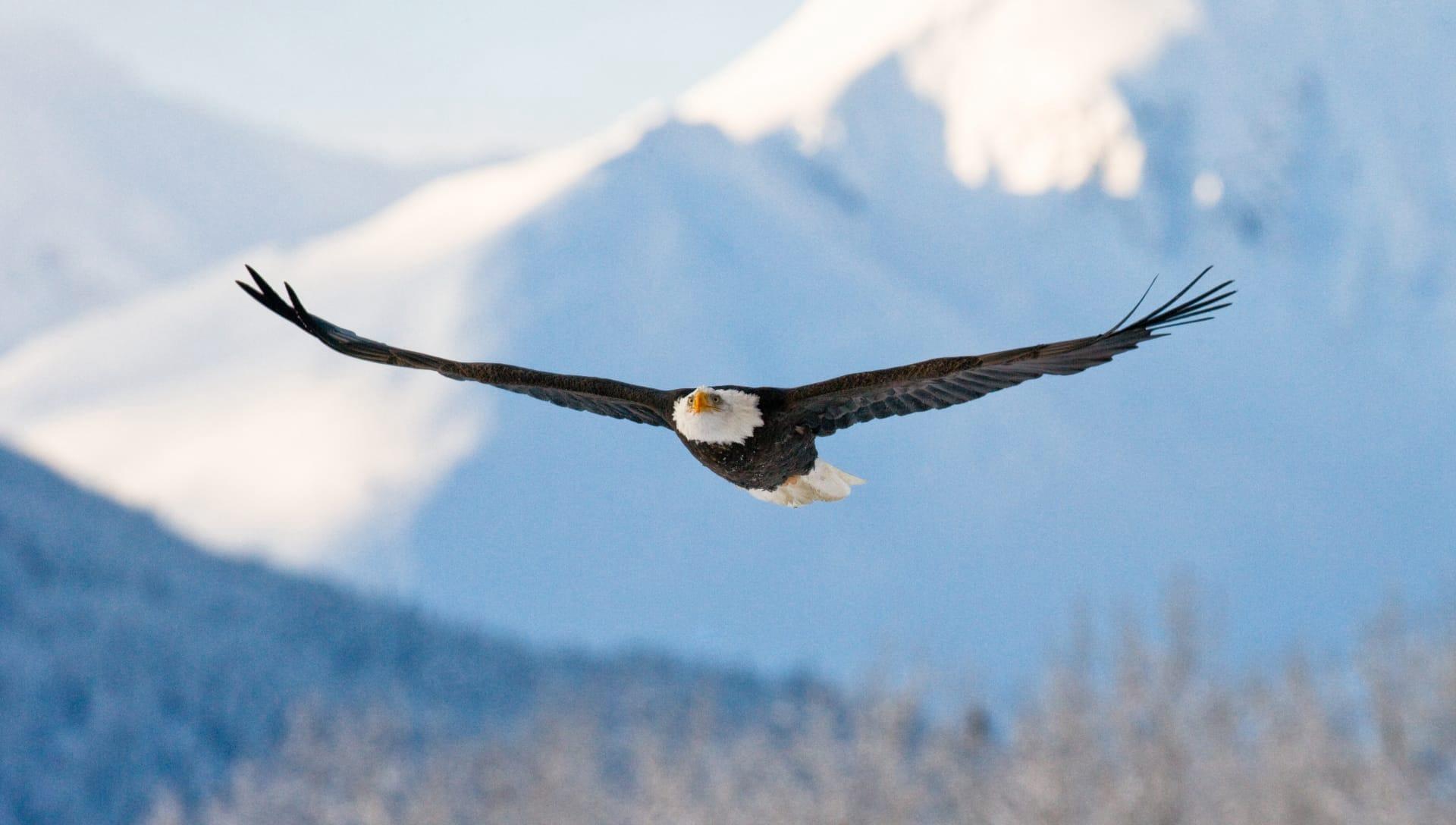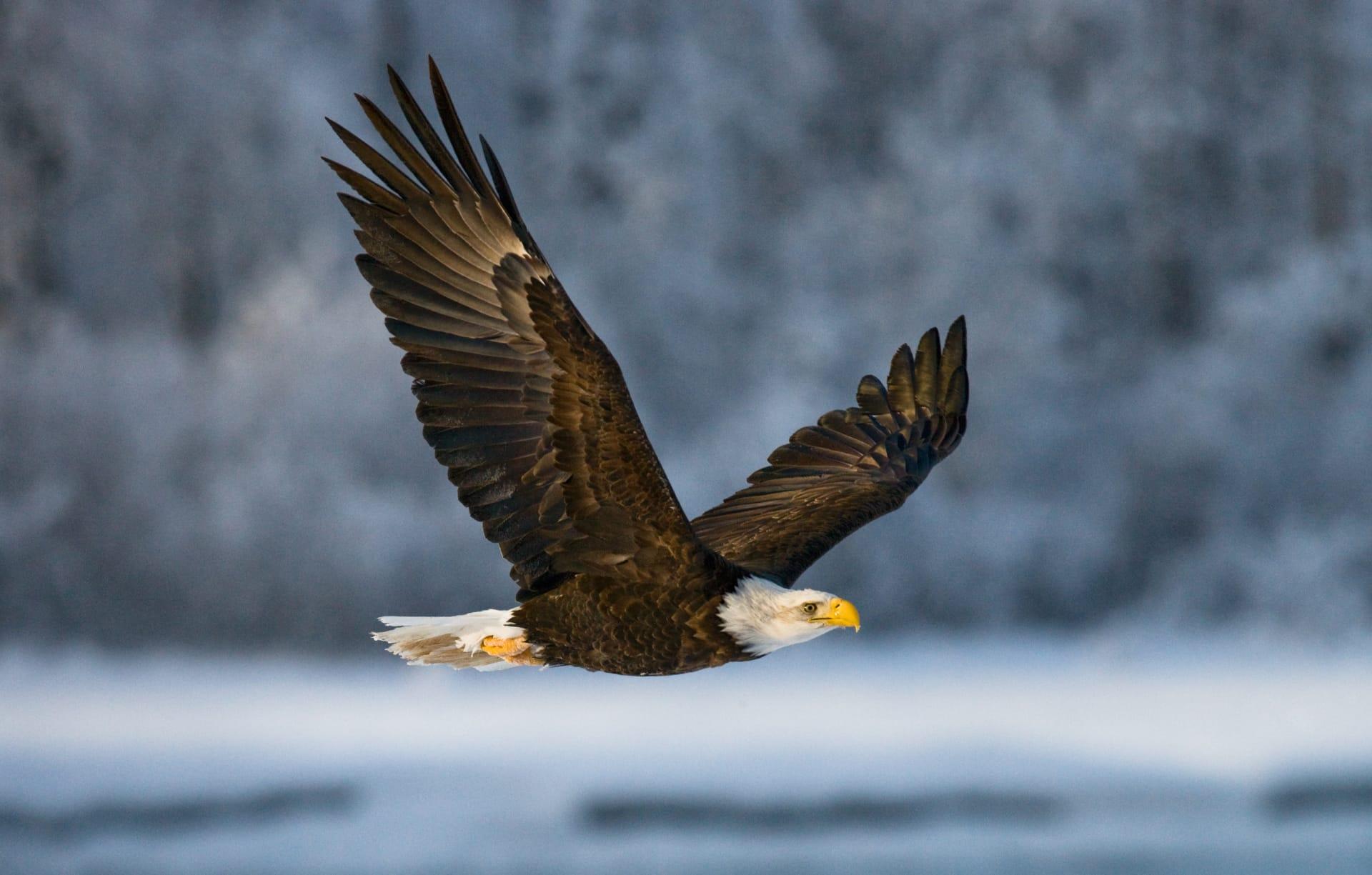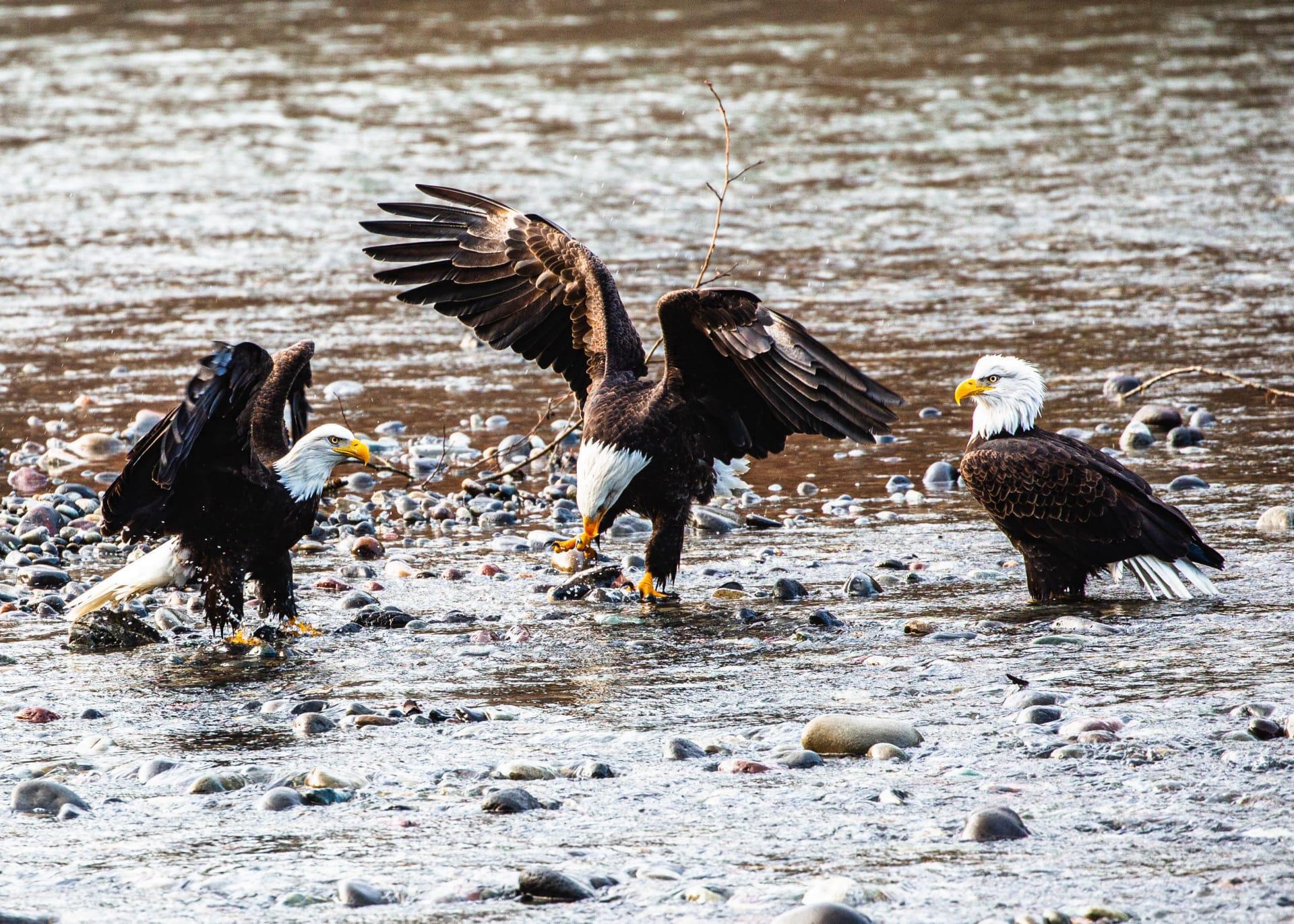Bald Eagle Characteristics
- Home /
- Mini Encyclopedia /
- Animal /
- Bald Eagle Characteristics
1
The Bald Eagle, a majestic bird of prey, is a symbol of strength and freedom in the United States. These birds are large, with a body length ranging from 28 to 40 inches and a wingspan stretching an impressive 6 to 7.5 feet. Adult Bald Eagles weigh between 6.5 and 14 pounds, showcasing a robust and powerful build. They are recognized for their striking white head and tail, contrasting with a dark brown body and wings. Remarkably, their lifespan in the wild is about 20 to 30 years, although some can live even longer, especially in captivity.
One of the most remarkable organs of the Bald Eagle is its eyes. Their eyes are large in proportion to their heads and are incredibly powerful. An eagle's eyesight is about four to eight times stronger than that of an average human. This exceptional vision allows them to spot prey like fish from several hundred feet above water. Their eyes are specially adapted for hunting, with a high density of receptors providing sharp, detailed vision. Additionally, they can see a wider range of colors than humans, helping them to detect the movements and camouflages of their prey more efficiently.

2
Question: Why do Bald Eagles have a white head and tail?
Answer: The distinctive white head and tail of a Bald Eagle are not present at birth. Instead, these features develop as the eagle matures, typically around the age of four to five years. This color change serves as a visual indicator of maturity, signaling to other eagles that they are ready for breeding. The white feathers also play a role in social communication among eagles. Interestingly, the pigment in these feathers is more resistant to wear and tear, which is essential for a bird that spends a significant amount of time in flight and exposed to various environmental factors.

3
The Bald Eagle is known for its impressive flight capabilities. These birds can soar at altitudes of up to 10,000 feet and reach speeds of 35 to 43 miles per hour when gliding. During a dive, they can accelerate to an astounding 75 to 99 miles per hour. This incredible speed, combined with their powerful wings, makes them adept at navigating diverse air currents. The Bald Eagle's flight is not only a mode of transportation but also a strategic component in hunting and territorial defense.
In terms of hunting, Bald Eagles primarily feed on fish, which they catch with remarkable precision. They have a unique hunting style, where they soar over water, spot their prey, and then dive down at high speeds to snatch the fish with their sharp talons. Bald Eagles also exhibit opportunistic feeding behavior, feeding on carrion and stealing food from other birds when available. Their keen eyesight, combined with their powerful talons and beak, makes them top predators in their ecosystem.

4
Bald Eagles thrive in a variety of habitats, often near large bodies of open water like lakes, rivers, marshes, and coasts. These environments provide an abundant supply of fish, which is their primary food source. They prefer tall trees for nesting, roosting, and as vantage points to spot prey. Bald Eagles are also adaptive to human presence and can often be seen in areas with moderate human activity, as long as there are ample food sources and nesting sites.
The reproductive behavior of Bald Eagles is fascinating. They are known for their long-term monogamous relationships, often staying with the same partner for many years or until one dies. Bald Eagles build large nests, or aeries, usually in tall trees near water. These nests are reused and added to each year, becoming massive structures that can weigh up to a ton. Females typically lay two to three eggs, and both parents share in the incubation duties. After hatching, the eaglets remain in the nest for about 10 to 12 weeks before they are ready to fledge.

5
Book: "The Bald Eagle: Haunts and Habits of a Wilderness Monarch" by Jon M. Gerrard and Gary R. Bortolotti. Published in the USA in 1988, this book provides a comprehensive insight into the life of Bald Eagles. Gerrard and Bortolotti, through years of research and observation, explore the behavior, ecology, and conservation of these majestic birds. The book details their feeding habits, reproductive behavior, and the challenges they face in the wild, making it a valuable resource for both bird enthusiasts and researchers.
Book: "Eagle's Plume: The Struggle to Preserve the Life and Haunts of America's Bald Eagle" by Bruce E. Beans. Published in the USA in 1996, this book delves into the history and conservation efforts surrounding the Bald Eagle. Beans chronicles the struggles and triumphs in protecting these birds, highlighting the environmental challenges they face. The book is a blend of natural history and conservation science, offering readers a detailed view of the Bald Eagle's journey from the brink of extinction to becoming a conservation success story.